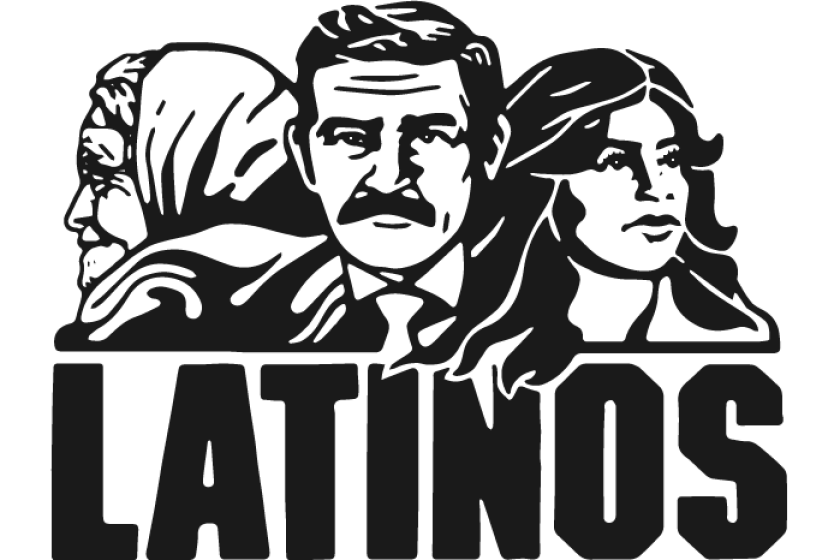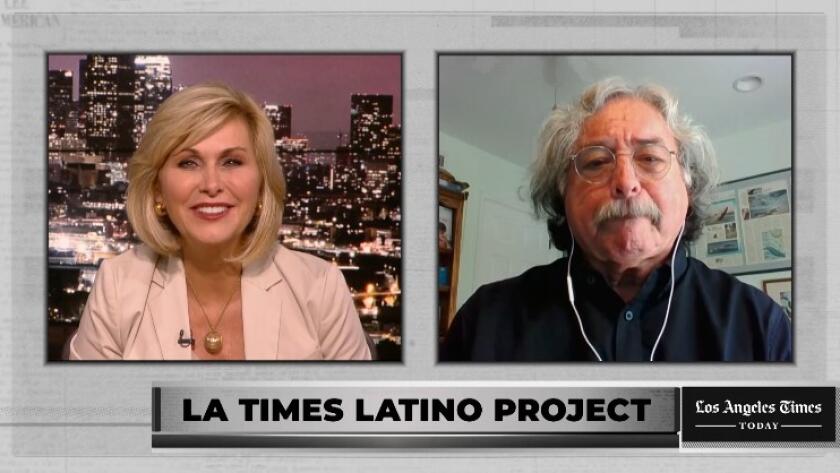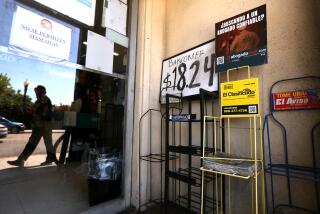Times reporter Louis Sahagun recalls sharing the 1984 Pulitzer for stories about local Latinos
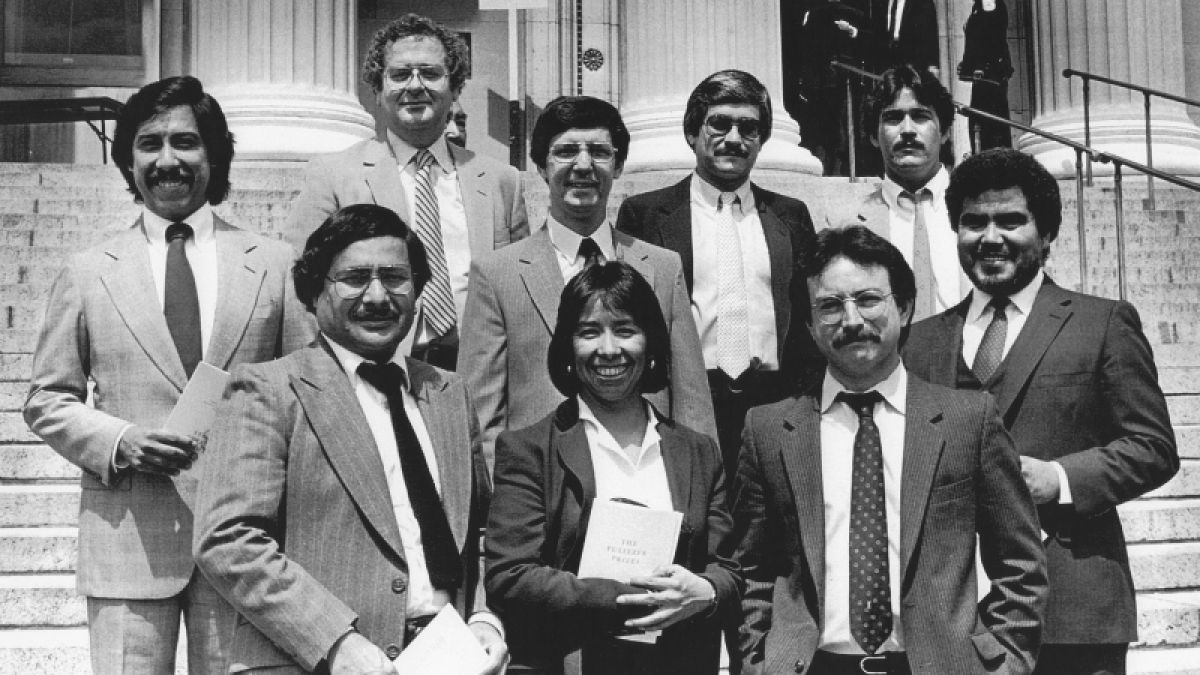
- Share via
Revolution was in the air. After Black journalists at the Los Angeles Times produced a series on the true experiences of Black Angelenos in the early 1980s, their Mexican American colleagues proposed launching another series that would contribute to a better understanding of Southern California’s burgeoning Latino population.
In the newsroom, a small group of seasoned Latino journalists urged others to contribute their free time and best ideas toward creating a series that would set the record straight on a community of 3 million, as well as the increasingly important role they held in shaping the character of California and the nation.

And why not? During the so-called “Happy Days” of the 1950s, The Times featured Anglo community leaders urging the police and sheriff’s department to get tough with vandals and gangs in the mostly blue-collar Latino communities east of downtown. They also supported massive redevelopment plans for the area.
At the same time, people who lived and worked in these neighborhoods were concerned about police brutality, racism, and overcrowded and underfunded schools with some of the worst dropout rates in the nation. They were also concerned with the devastation caused by new construction, such as the building of myriad freeways that displaced 10,000 people and left behind a legacy of noise and pollution.
So, this series — produced by Latinos and supported by a wealth of statistics and anecdotes about life in the barrios of Los Angeles and the problems facing these communities — would be our way of saying, “The L.A. Times is committed to looking at your diverse and growing community through the eyes of members of your community.”
Led by columnist Frank del Olmo, assistant city editor Frank Sotomayor and reporter George Ramos, the journalists met frequently in conference rooms, downtown restaurants and cramped apartment living rooms. What emerged from these sometimes contentious gatherings was a bold project proposal:
A months-long commitment by all of The Times’ Latino reporters and editors to make a landmark collection of articles about people in pursuit of the Latino American Dream. It would be based on innovative research, oral histories, photographs and demographic data.
I was a 32-year-old business reporter who had started working at The Times a decade earlier as a floor sweeper. So, it was a privilege — and also scary as hell — to be part of the effort after it was approved by management.
In the summer of 1983, The Times published a series on Southern California’s Latino community.
That’s because our project was almost immediately overshadowed by the skepticism of many Anglo doubters in the newsroom who shrugged it off as a “lightweight” journalistic exercise, an experiment bound to fail.
Our preferred gathering place for lunch-hour strategy sessions became a round table at the Redwood saloon and restaurant less than a block from The Times.
During one of those meetings, a veteran white reporter seated at a nearby table looked over his shoulder, smiled sarcastically and said in a voice loud enough for all of us to hear, “So, when can we expect to see this debacle?”
Ramos, as I recall, smiled and responded with something along the lines of, “You just wait. You’re going to regret those words.”
Every step of the way, we were guided by the sage advice, encouragement and fine editing of Sotomayor, del Olmo and Ramos.
My main contributions to the series included a profile of the community of Boyle Heights, a bustling historic port-of-entry community east of downtown that was emblematic of the dreams and challenges of Latinos in Southern California.
In fact, my grandmother, Juanita Velasquez, ran a store in the area called Velasquez Tortilleria and lived in a modest apartment above it that overlooked bustling Whittier Boulevard.
Empowered by a sense of mission, I covered Boyle Heights like a war correspondent: I interviewed political leaders, city planners, historians, business leaders, law enforcement authorities, gang members, school officials and exemplary students in local high schools. I also examined thousands of pages of city historical records and documents and conducted dozens of random man-on-the-street interviews.
And when I finally filed to Sotomayor, it was a colossal article stuffed with details including kids’ school grades, people’s golf scores and even weather reports.
I’ll never forget the shock on Frank’s face when I filed the 180-inch-long article and said, “Hope you like it.”
Frank, of course, set to work, whittling it down to a more practical, informative and readable 80 inches. My response turned from initial frustration to, “Oh yeah. I see what you mean.”
There were a few profound disappointments after our series, “Southern California’s Latino Community,” was published in The Times. For example, a few months before the Pulitzer Prize was announced, our 17-part series received only an “honorable mention” at the annual Los Angeles Times editorial awards banquet held at the Beverly Hilton Hotel.
It’s impossible to describe, however, the sense of accomplishment and pride we felt after it was announced that our 1983 Latino stories had won the 1984 Pulitzer Prize for Public Service, journalism’s top honor.
But the excitement turned to disappointment during the prize ceremony at Columbia University’s Low Library.
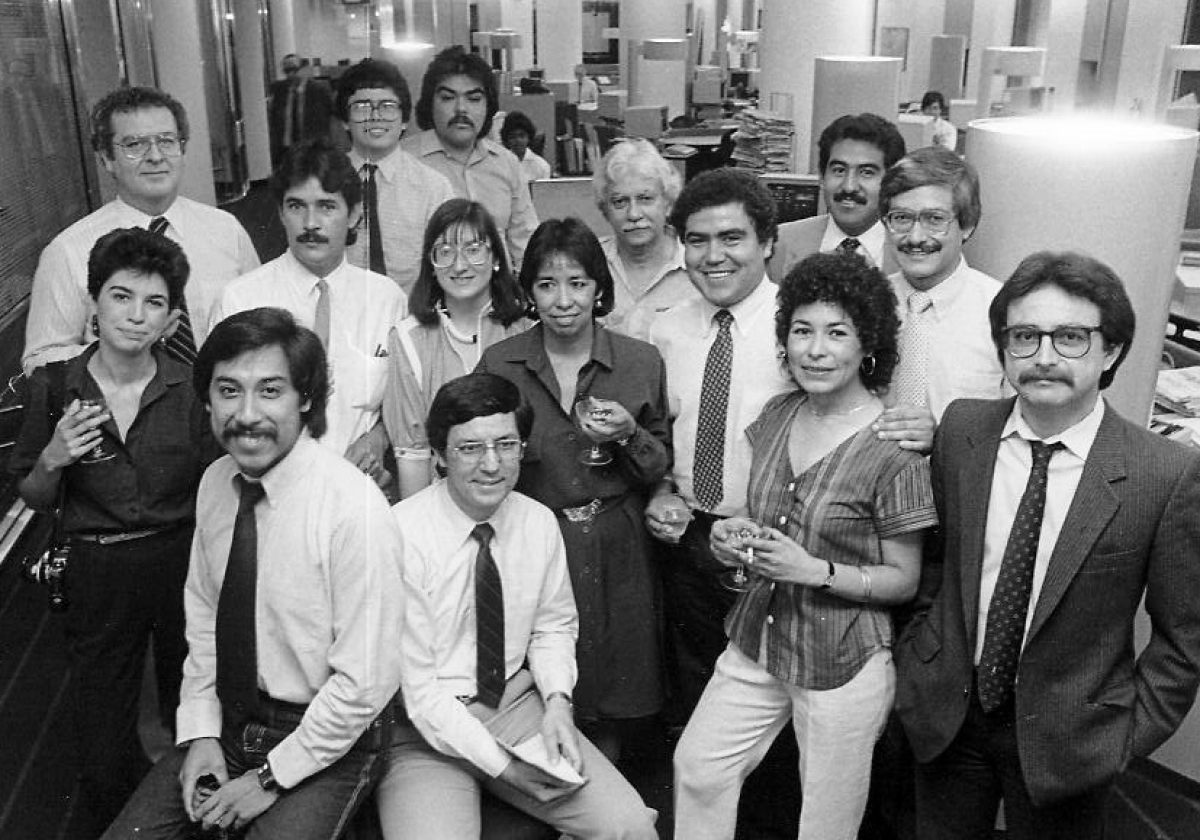
Michael I. Sovern, Columbia’s president, concluded his opening remarks and said, “And now I invite to the podium, to accept the Pulitzer Prize for Public Service, on behalf of the Los Angeles Times and its exceptionally talented … team of Mexican American reporters and editors … William Thomas.”
Times Editor Thomas jumped out of his seat and onto the stage and accepted the gold medal. He made no mention of the six of us who were watching forlornly from seats just a few yards away.
Virginia Escalante, a Times reporter at the time who had paid for her father and younger brother to fly from Arizona to share the momentous occasion, recalled the oversight as “a slap in the face.”
My room was closest to the event, so we headed there to celebrate into the wee hours. Long past midnight, Ramos dialed room service with a special request: “Bring us a few bottles of your best champagne.”
- Share via
Watch LA Times Today at 7 PM on Spectrum News 1 on channel 1, on Cox systems in Palos Verdes and Orange County on channel 99, and live stream on the Spectrum News App.
More to Read
Sign up for Essential California
The most important California stories and recommendations in your inbox every morning.
You may occasionally receive promotional content from the Los Angeles Times.
